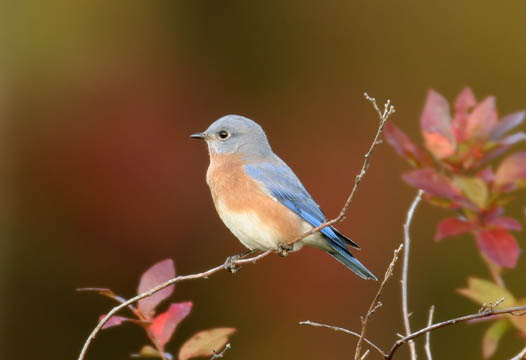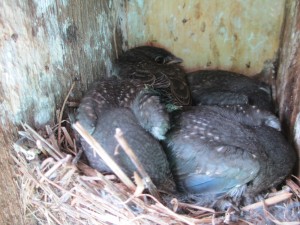Our busy year has come to a close. All of our nest boxes have been empty for a while, and we doubt we will have any more new nests. We have had great success at many of our sites. Here are some of our stats.
2015 Stats
Our 18 nest sites are at Memorial Park, the Bike Path, Beeman Creek, and our new locations Peanut Line and Clarence Library. Our total fledgling count is way above last year’s total of 32. Of this year’s total, 15 were Eastern Bluebirds.
This number is slightly down from last year’s 21, but we had an 80% success rate (number of Bluebird nests producing fledglings/total number of Bluebird nests) on those nests. Most of the Bluebirds that nested were able to care for their nestlings and raise them to fledglings. That is our primary goal, give a safe environment for Bluebirds to nest, and I think we have accomplished that goal.
Our New Sites
Our new sites on the Peanut Line and at the Clarence Library, have given us some interesting results. The Peanut Line gave us three each of Tree Swallow and Eastern Bluebird fledglings. When we initially scoped out the area, it was early in the season, and the cold, damp, windy weather made it hard for us to think about putting up more nest boxes. As the weather warmed, we were able to see the rewards.
Not all the rewards were in fledglings though; we gained great experience in dealing with our nemesis, Passer domesticus, commonly known as House Sparrows. These little bullies constantly invaded nest boxes at our Clarence Library site, but we were able to keep them from successfully producing more young. We learned that persistence and patience we could keep them at bay. However, I will admit, my patience was beginning to wane near the end of the season.
Not Just for Bluebirds
Since we don’t get just Bluebirds in our boxes, let me give you a breakdown of the other species that were able to add to their numbers. We had a total of 20 Tree Swallows fledglings, 30 House Wrens, and 4 Black-capped Chickadees. It was nice to see a varied selection of species using our boxes. The more species in the environment, the healthier it is.
Overall, we are very happy with our year of nesting. For our new and returning volunteers, your help made this year successful and we hope you will consider staying on for the years to come. For our readers that live in the Clarence, NY area, consider joining us next year and help the Eastern Bluebird increase its numbers.




